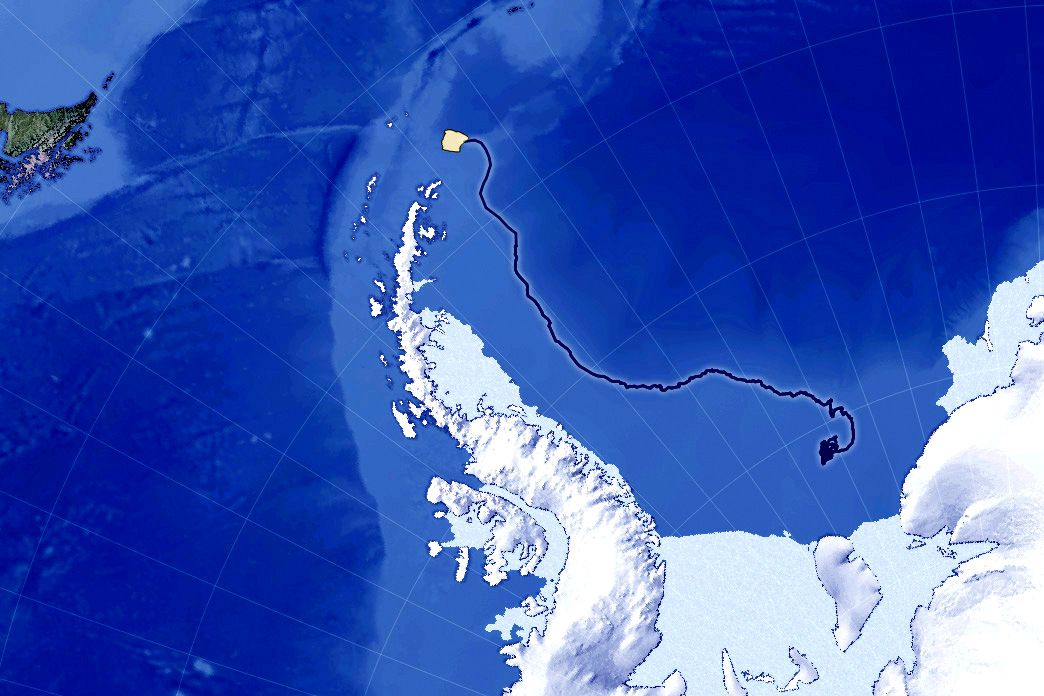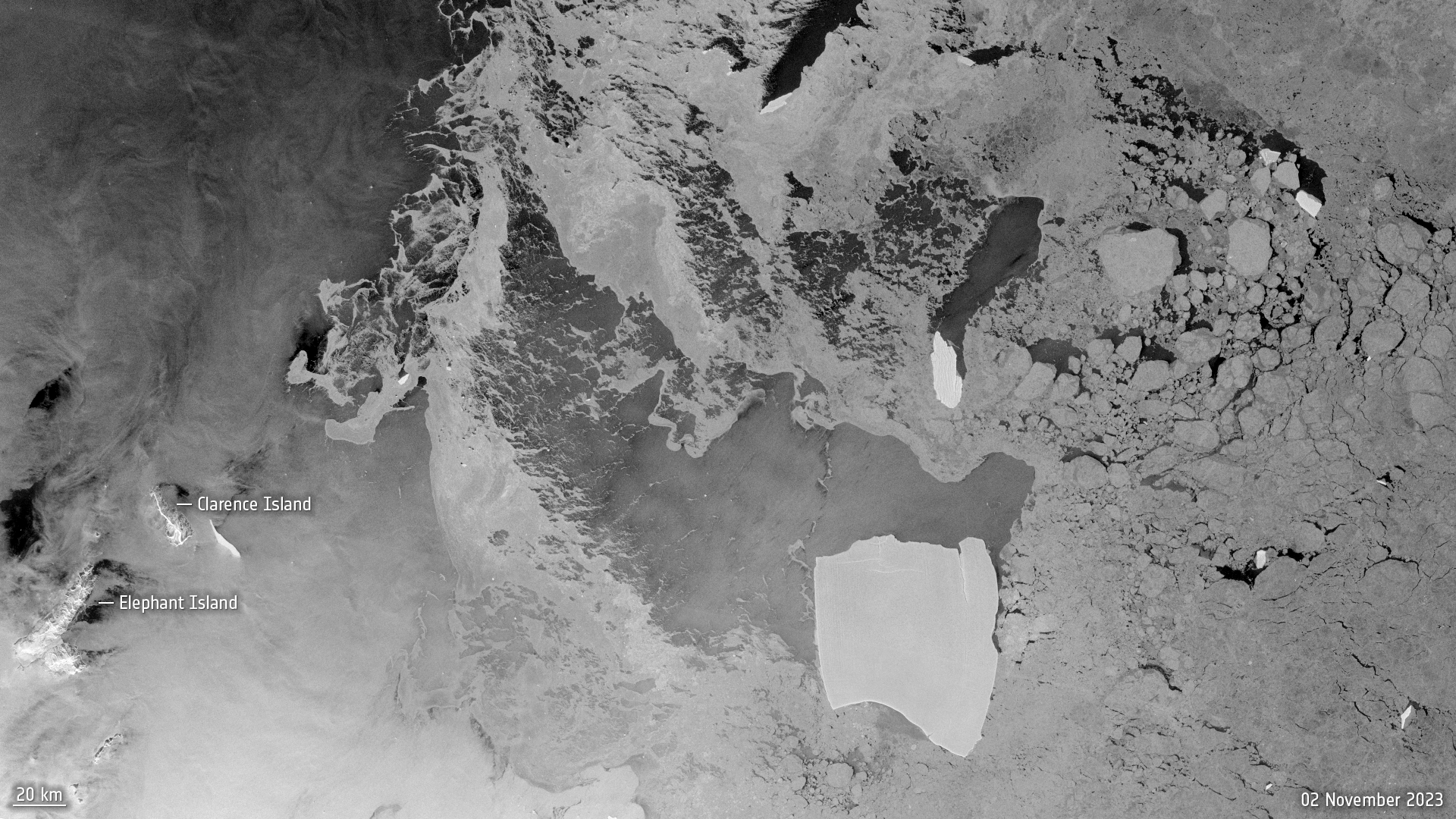Iceberg Adrift
Iceberg A-A23 adrift (credit: Copernicus Sentinel-1/ESA)
The world's largest iceberg has floated away from Antarctica. It is larger than New York City.
According to NASA and the European Space Agency (ESA), that have been monitoring an ice shelf on the frozen continent for decades, the iceberg labeled A-23A had been stationary but is now moving quickly. Last month, it measured nearly 1,700 square miles (4,300 square kilometers) making it the largest of any iceberg currently drifting in the world’s oceans. It has a width of 46 miles making it the same as the state of New Jersey and its size is larger than New York City. The height of the ice mass 1300 feet, matching that of a 13 story building there.
The huge berg originally separated from the Filchner Ice Shelf in West Antarctica in 1986 but ran aground on the ocean floor. Three years ago, it lost its grip on the seabed and drifted into the Weddell Sea off the Antarctic Peninsula. Now, being driven by winds and currents, the ice is moving quickly away from Antarctica. The mass is drifting northward which will potentially bring it closer to commercial shipping lanes, islands inhabited by wildlife, and the warmer waters of the Southern Ocean where it will likely break apart.

Iceberg A-23A's movement in Weddle Sea (credit: NASA)
The ESA created a satellite photo animation over the past month showing its independent progress.

Sentinel-1 satellite photo animation, 11-2-23 to 11-26-23 (credit: ESA)
Like most icebergs in the Weddell Sea, A-23A will likely end up in the warmer waters circulating in the Southern Ocean off South America and Australia. While it now carries the world record for its massive size, A-23A is unlikely to remain the leader as more and more ice calves away from Antarctica's ice sheets and glaciers. A potential glacial surge or even collapse has been suggested for the Thwaites Glacier due to increasing water temperature around it. Stay tuned! WHB